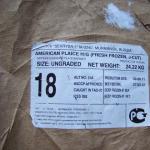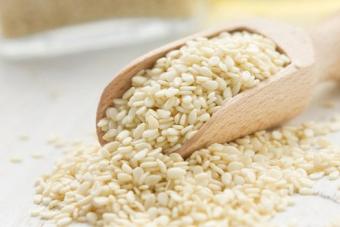Hello dear blog readers!
You can name a huge number of potato dishes - it has long been present on our tables on weekdays and holidays. This is the most popular, frequently consumed and loved by all product. Mashed potatoes , stewed potatoes, fried, in the form of zrazy and potato pancakes - this is prepared for themselves by parents. And what can be offered to the smallest? Should I start feeding my baby potatoes? What is the use of it for the child's body? Let's figure it out.
If we compare potatoes with other vegetables, then it has the highest amount of starch and carbohydrates. Based on this fact, most parents doubt whether it is necessary to feed their baby with mashed potatoes. But this root crop is ideal for feeding purees, which are very tender, without a sharp taste. A potato dish for lunch can be a tenth of the required energy supply for the whole day.
As for vitamin C, in the composition of potatoes it is enough to fill the body with the daily norm. There is also fiber, which contributes to the proper functioning of the digestive tract. Potato has the property of enveloping the walls of the digestive organs. Potassium, which is contained in the product, strengthens the heart muscle. Selenium - protects the thyroid gland and strengthens the immune system. It is important to note that potatoes are a hypoallergenic vegetable.
Potato harm
The main disadvantage of potatoes is that during long-term storage, solanine begins to form in the fruit. Do not take sprouted potatoes, they contain the highest percentage of this substance. For cooking for children, peel off a thicker layer of peel - this will protect the body from even the smallest dose of a harmful substance.
When can potatoes be included in the children's diet
For breastfed children, one-component mashed potatoes are allowed from the age of six months, for artificial children - from 5 months. You can combine potatoes with other products from 9 months.
To make mashed potatoes for an infant, boiled potatoes need to be chopped in a blender, diluted with a little milk and a drop of vegetable oil. Salt is not needed, salt is added to food when the child is 10 months old. From 8 months they give boiled potatoes, mashed with a fork.
Choosing a product for the children's menu
The ideal option would be potatoes that you grew yourself. But if the garden is not for you, choose domestic products, so you reduce the risk of buying potatoes that are processed with chemicals or GMOs.
The size of the potatoes should be medium, too large or small tubers do not carry much benefit, and they taste worse. The root crop should be firm, without white or black specks on the peel. Be careful when choosing.
How can you tell if a potato contains nitrates?
When cut from the root crop, juice should not come out.
Complementary food preparation
Before cooking complementary foods, potatoes need to be rid of starch. For this:
- Peel as many potatoes as you need.
- Pour cold water over the potatoes and leave for a day.
- Rinse the tubers immediately before cooking.
Mashed potatoes: recipe for babies from six months
Boil 2 small potatoes in a saucepan or slow cooker. The process will take 20-25 minutes. Smash the finished potatoes with a blender. For a softer and lighter consistency, dilute the puree with breast milk or water in which the tubers were boiled. You need to feed the baby with warm puree.
Like all complementary foods, potato start from one teaspoon per day, following the reaction of the body.
Mashed potato cutlets
A dish according to this recipe can be prepared for a 1.5 year old baby.
Ingredients
- 1 chicken egg;
- 1 small carrot;
- 50 grams of any hard cheese;
- 3 medium sized potatoes;
- 3 tbsp flour;
- salt to taste.
Cooking
Boil potatoes in salted water. Then it needs to be pureed and allowed to cool slightly. As soon as you can touch the puree with your hands and not burn them, you can start cooking the patties.
To do this, beat 1 egg in mashed potatoes and mix. Grate carrots and cheese on a fine grater. Mix all the ingredients in one mass, adding flour.
With wet hands, shape into a small patty. Put them in a frying pan heated with vegetable oil and fry on both sides until golden brown. You can replace carrots with any other vegetables, and also completely eliminate flour by rolling the cutlet in breadcrumbs.
Mashed potato recipe with milk
Ingredients
- 3 potatoes;
- 80 ml of milk;
- 1 tsp butter;
- 1 yolk;
- salt.
Cooking
Puree boiled potatoes, add hot milk to it, while stirring the potatoes. Boil the resulting mass. Then add salt, butter and egg yolk, mix until smooth.
Puree goes well with tomato juice (if the baby is not allergic to it), vegetable salads or stewed vegetables.

Potato soup-mashed potatoes (for children from 1.5 years old)
Ingredients
- 3 medium potatoes;
- 100 grams of cauliflower;
- 1 large carrot;
- 1 small onion;
- 200 grams of hard cheese;
- 2.5 tbsp sour cream;
- 5 liters of water;
- salt to taste.
Cooking
Cut potatoes into even-sized pieces. Cauliflower should be divided into small inflorescences. Grate the carrots on a fine grater, cut the onion into cubes. When the water in the pan boils, you can add potatoes and cabbage inflorescences to it, cook for 25 minutes over medium heat.
From carrots and onions you need to make frying in butter. But do not "gild" the onion, it should just become transparent. Add the roast to the potatoes and cabbage and simmer for 7 minutes over low heat.
The next step is to puree the soup, this can be done with a blender. Add sour cream, salt and part of grated cheese to the puree, use the other part when serving, sprinkling the soup on top. It can also be served with fresh herbs and white bread.
Mashed potato casserole (For children from 2 years old)
This recipe will add variety to your little one's diet. You can cook such a dish both in the oven and in the slow cooker.
Ingredients
- 0.5 kg of potatoes;
- 300 grams of chicken or ground beef;
- 1 egg;
- 30 grams of butter;
- 100 ml of milk;
- 2 tbsp tomato paste;
- salt to taste;
- 2 tbsp breadcrumbs.
Cooking
Boil potatoes in salted water. Fry the finely chopped onion in a pan. Add minced meat and tomato paste to the onion, stew these products until fully cooked.
Add hot milk and butter to the finished mashed potatoes, mix and beat in the chicken egg.
Take a medium sized baking dish and grease it with oil or line it with parchment paper. Lay out the ingredients in the form in layers: mashed potatoes, minced meat, the last layer will be mashed potatoes.
Sprinkle the casserole with breadcrumbs and bake in an oven preheated to 180 degrees for half an hour.
Conclusion
Mashed potatoes and potato dishes can be a hit with kids if they're deliciously prepared and presented in a fun way. Potato diversifies the children's menu, and the lack of vitamins in this product can be easily compensated by combining potatoes with other vegetables, and then your baby's lunch will be even more healthy and satisfying.
In Russia, for a very long time, potatoes have been one of the essential components of first courses, a rare soup can do without it, often this product is an independent side dish or even the main ingredient in your favorite salads. Of course, mothers ask questions, from how many months can you feed potatoes and how to cook it for a child?
Many mothers are interested in when it is possible to give a child such a beloved vegetable by many people as a potato.Benefits of mashed potatoes
Perhaps this will seem unexpected, because we are used to considering broccoli, cabbage, and zucchini as healthy vegetables, but mashed potatoes are not inferior to them, but even surpass them in some ways. Surprised? Now consider potatoes tasty, but useless or even harmful food - the last century. All “charges” have been removed from it, and moreover, some scientists have included it in the list of the most useful vegetables. Why? This root crop can find a lot of advantages, let's get acquainted with the main ones.
Enrichment of the root crop with minerals and vitamins:
- The presence of folic acid (vitamin B9). You, probably, from the time of your pregnancy, remember the exceptional need for this substance for the development of the brain and the entire central nervous system.
- Record holder for the content of potassium and aluminum. Potassium helps the heart and kidneys work, and aluminum stimulates the growth and development of tissues.
- The presence of phosphorus, magnesium, chromium, vitamins of group B, PP.
- 20 g of young potatoes contain up to 5 mg of ascorbic acid. In terms of vitamin C content, although it is inferior to an orange, it is ahead of an apple and avocado.
- The presence of rutin (vitamin P), which is the main "partner" of ascorbic acid. Together, they perfectly strengthen the immune system and increase antiviral activity, which is very important for a fragile baby's body.
- There is more selenium in one tuber than in seeds and nuts; it is the leader among all vegetables in terms of its content. Selenium helps the normal functioning of the thyroid gland and the immune system.

 Potatoes have a number of useful vitamins and elements that are necessary for a growing child's body.
Potatoes have a number of useful vitamins and elements that are necessary for a growing child's body. Other advantages of the root crop:
- The presence of protein, which is very necessary for the construction of cells of the growing body of the baby. It contains almost all the amino acids found in plants, including essential ones, and its acids, although close to animals, are well balanced, so they are easily absorbed, which means there will be no problems with the baby’s tummy.
- It also helps digestion, due to the large amount of fiber and minerals, cleanses of toxins.
- Starch reduces the amount of cholesterol in the liver and blood serum.
- Availability for sale all year round and low cost of the product, especially for such a rich composition.
Potatoes are an excellent source of strength for a developing baby. In this case, the calorie content of this product is rather a plus, because a growing body needs energy so much. It is cooking that makes potatoes harmful and too high-calorie: fried or baked “in uniform” - the difference is enormous. In our article, we will consider consumption rates that will saturate the body with vitamins and minerals and at the same time not overfeed the baby, and we will also give several recipes that retain all the beneficial properties of potatoes.

 Baked potatoes are healthier than boiled, and even more so, fried. Therefore, the child can cook this version of the dish
Baked potatoes are healthier than boiled, and even more so, fried. Therefore, the child can cook this version of the dish Disadvantages of Mashed Potatoes for Babies
Dear reader!
This article talks about typical ways to solve your questions, but each case is unique! If you want to know how to solve your particular problem - ask your question. It's fast and free!
Unfortunately, there are downsides to eating potatoes. To avoid them, let's find out how it can harm health:
- The presence of starch, which can lead to an allergic reaction. If it appears, just put the potatoes aside until the baby is one year old. In this case, you can get all the substances necessary for good nutrition from hypoallergenic products.
- Accumulating over time, solanine is a deadly poisonous substance. Because of it, the potato acquires a greenish tint. This substance is formed under the influence of light, so it is better to store root crops in the dark. A lethal outcome is possible only with the regular consumption of large amounts of solanine.
- Problems of the gastrointestinal tract: flatulence, constipation. To avoid this, combine the potato menu with foods that help remove food from the body.
- Let's talk about calories again. Control the amount of potatoes you eat according to our guidelines and you won't have any problems. However, if you are already overweight, exclude the root crop from your diet.
How to choose a good potato?
- the younger the potato, the better (there is a maximum amount of ascorbic acid in it and there is no solanine);
- the average size of tubers (more vitamins, less starch);
- no sprouts;
- without rot, dark spots and unpleasant smell;
- uniform color, without a greenish tint.
It is necessary to choose potatoes without damage and sprouts. The younger he is, the better.
Of course, the best potatoes are grown on your own plot of land or from friends of summer residents. This is not always possible, and your own potatoes also “get old” and are filled with hated solanine, so look for conscientious suppliers for shopping who can confirm the environmental friendliness of grown root crops.
How to cook?
The most effort will be required to prepare mashed potatoes at the initial acquaintance of the baby with him. Let us consider in detail what exactly needs to be done so that the baby appreciates both the taste and the benefits without negative consequences. For the first meal:
- Soak potatoes in cold water for 2 hours. This will help clear it of starch and nitrates. Together with them, a small part of the vitamins will also go away, but for the correct first feeding, this is indispensable.
- Cook any of the 3 ways you like best: simmer, steam, or bake. Baked in a uniform retains the greatest amount of useful substances, for example, potassium, which is most of all just under the peel.
- Peel, grind with a strainer or mash with a pusher. Unfortunately, it is undesirable to use a blender, the puree will become too sticky and will be difficult to digest in the baby's body.
- Add breast milk or milk formula until you get a smooth, semi-liquid consistency, without any lumps.
- Salting is highly discouraged.
Recipes for a grown up baby:
- Continue soaking the root crop in cold water for at least 2 hours, since the enzymes that are able to digest a large amount of starch in a quality manner will be produced by the baby only at 9-10 months of age. We offer you 2 delicious recipes.
Before preparing potato dishes for a child, the vegetable must be soaked in water from excess starch
Vegetable puree soup
Prepare these ingredients:
- 1-2 potatoes;
- small carrot;
- 50 g cabbage;
- 2 drops of vegetable oil.
Cooking:
- Wash the root crops well, peel, cut into pieces, soak for a couple of hours in cold water.
- Shred the cabbage. Cut the carrot.
- Drain the liquid from the root crops, pour 200 ml of new water and cook for about half an hour.
- Cook until done. Drain the broth into a separate container and cool, we still need it.
- Grind vegetables with a blender.
- Dilute the resulting puree with broth to a semi-liquid consistency, season with vegetable oil.
Start feeding your baby this soup no earlier than 6 months. When the baby is one year old, you can salt the soup a little and add sour cream.
In soup puree for a child, you can add only those vegetables to which the baby is already accustomed.
Mashed Potato Soup
You will need the following products:
- 2 medium tubers;
- leek stalk;
- 150 ml of milk;
- a spoonful of butter.
Cooking:
- Wash the root crops well, peel, cut into pieces, soak for a couple of hours in cold water.
- Wash the onion thoroughly, cut into rings and fry a little in oil right in the pan. Pour 150 ml of water on the onion and cover with a lid.
- When the onion boils, add the potatoes and cook for about half an hour (see also:).
- Grind the vegetables with a crush or blender (do not drain the broth).
- Add hot milk, mix well.
- Serve warm to baby.
The minimum age for this soup is 8 months. Please note that it is not suitable for a child with an allergy to cow's milk.
Be careful with the amount of potatoes in the child's diet, as excessive consumption of this vegetable can lead to overweight crumbs.
At what age should we start complementary foods?
Before introducing mashed potatoes to your baby, consult your pediatrician (more in the article:). Most likely, he will recommend doing this after cereals and vegetables such as broccoli, cauliflower, zucchini and onions.
There is no single recommendation at what age to introduce potatoes to babies. If your baby is breastfed, then he will be ready to feed potatoes not earlier than 7-8 months. Artificialists have time to try it already at 6 months, since their complementary foods are initially introduced earlier, because it is necessary to quickly begin to enrich the milk mixture with the missing substances from food. Perhaps the pediatrician will recommend mashed potatoes to your child already at the age of 5 months in order to quickly get the weight back to normal or for some other reason, his consultation in this matter is mandatory.
Basic rules for feeding potatoes
- Aim to give potatoes, like other vegetables, at lunchtime (around 2 pm).
- Initially, a couple of weeks it is worth preparing a new puree before each meal. Then it can be stored in the refrigerator for 2 days.
- A serving of mashed potatoes is about 140 g per year.
- By the age of one and a half, potatoes should make up no more than a third of the total number of vegetables (only because of their high calorie content).
If the first feeding with potatoes goes without problems, try not to feed her baby. Follow these norms, then the baby will feel all the benefits of our favorite root crop and will not gain excess weight or problems with the tummy.
Mashed potatoes are a taste familiar to all of us from childhood. Today, healthy lifestyle advocates criticize potatoes for empty calories and an abundance of starch, but parents continue to feed their babies with fluffy mashed potatoes, as our mothers and grandmothers did. So who is right and when can a child be introduced to this nutritious dish?
In fact, both fans of a healthy diet and caring parents are right, who, following the example of our ancestors, are not afraid to give potato dishes to their children. This tuber contains useful substances:
- phosphorus,
- potassium,
- antioxidants,
- organic acids
- iron,
- different types of vitamins.
However, potatoes contain a lot of starch, which can cause allergies or indigestion in a child. Also, potato dishes have a high glycemic index, which means they are contraindicated in diabetes and insulin metabolism disorders. Individual reactions are also possible - some children with mashed potatoes noticeably puff up, they may have a tummy ache or constipation.
How to avoid side reactions? Everything is very simple - you need to give mashed potatoes to the child little by little, while observing his well-being. Most children do not react to potato dishes in any way, eat them with pleasure and do not suffer from gas formation and allergies, but for the first time it is better to play it safe.
When can you offer your child mashed potatoes?
The recommendations of pediatricians in this case vary somewhat. For example, Dr. Komarovsky advises introducing a baby to mashed potatoes no earlier than 8 months, when the child has already tried cereals and sour-milk products, and has also grown at least one tooth. Other sources suggest introducing potatoes into the diet from 6 months - if the child is at full breastfeeding, and from 5-6 if we are talking about artificial feeding. In fact, it’s better to postpone this moment a little, and not give potatoes as the first (or even second) complementary foods - for the gastrointestinal tract of a six-month-old baby, this can become an unbearable burden. But at 8 months and beyond, your baby will fully appreciate the taste of the new dish.
For the first time, half a teaspoon of mashed potatoes will be enough for the baby, in the future, the portion can be gradually increased. And closer to the year, you can mix mashed potatoes with other chopped vegetables or herbs - many kids enjoy eating such a nutritious mix.
Despite the fact that mashed potatoes are a very simple dish, there are a few culinary tricks that will help keep the nutrients in the dish and avoid negative reactions.
- Most of the vitamins are stored in a baked potato, so you should try baking a vegetable for a children's dinner in the oven, and then turn it into a puree. If this is not possible, try boiling potatoes in their skins - this also preserves vitamins and trace elements from destruction.
- If your baby is prone to allergies, then before cooking, the tubers should be soaked in cold water for 20-25 minutes.
- Traditionally, mashed potatoes are prepared with the addition of milk, but this recipe may not be suitable for allergic children. Puree on water or any other milk, except for cow's milk, is suitable for them. For taste, you can add butter or vegetable oil.
- Not all children like puree made with a blender, as it turns out to be very viscous. Then you can simply grind the boiled potatoes with a special pusher, just make sure that there are no large lumps left in the finished dish.
Finally, we recall that it is not recommended to give potato dishes to children under the age of one year every day - it will be enough to treat the baby to mashed potatoes 2-3 times a week. It is best to offer potatoes for lunch, so you can track any unwanted reaction, and if the baby still has a tummy ache, this will not cause a sleepless night for the whole family.
Views: 14 041Kids love mashed potatoes. However, before you start preparing mashed potatoes for babies, you need to consult a pediatrician. After all, potatoes for a baby are rough food, because of which he may have problems with digestion. But this does not mean that potatoes cannot be introduced into complementary foods at all. It is possible, but little by little. Below we will suggest a suitable recipe for mashed potatoes for an infant, also with the addition of other vegetables.
Unlike other vegetables, potatoes are high in carbohydrates and starch. That is why the baby may have problems with the stomach. Especially when the digestive system of a small child is just starting to get used to a new food. If a mother very often prepares mashed potatoes for a baby, then it can happen to him. And some children begin to gain after eating mashed potatoes. The vitamins and nutrients found in potatoes are essential for the development of the baby. But you should not feed your child with potatoes every day, despite the fact that children are happy to eat soft mashed potatoes. But for babies who have diarrhea and who are not gaining weight well, on the contrary, mashed potatoes are recommended to be given more often.
When choosing potatoes for cooking babies, it is better to choose domestic potatoes. A medium-sized potato has more useful than a large or small one. You can’t make mashed potatoes for an infant from potatoes that have even turned a little green, have a white coating or are rotten. Potatoes should be even-skinned and firm. Homemade mashed potatoes for babies can be prepared by boiling and mashing potatoes. But first you need to make sure that the potatoes have less nitrates and starch. Therefore, before cooking, first properly process the potatoes. Remove the peel from the root crop with a thick layer of a knife. And it's better if you cut off more of the skin. Then it is advisable to leave the potatoes in water for a day. This is how you remove unnecessary starch and nitrates.
Subscribe to Feed Your Baby on YouTube!I'll start cooking. baby mashed potato recipe
For a 5-6 month old baby, you can make mashed potatoes, which will require one or two potatoes. If possible, then steam them in a slow cooker. Do not add puree. When the potatoes are cooked, add the broth in which the potatoes were boiled, and beat it all to form a homogeneous mass without lumps. Instead of a decoction, you can use. Give your child half a teaspoon first. Then increase the dose. Carefully observe the child so that after eating potatoes the baby does not have. After some time, you can add boiled yolk, meat, vegetable puree, olive oil to mashed potatoes.
For a 7-8 month old baby, prepare mashed potatoes as follows:
- potatoes (1 root vegetable);
- carrots (half a vegetable);
- (half a teaspoon);
- white cabbage, turnip or swede (optional).
Cut the vegetables and place in a saucepan, pour boiling water over them. When the vegetables are ready, grind them into a homogeneous mass. Add salt, butter, some milk. Mix the whole mass, and then bring to a boil.
For an 8-9 month old baby, you can make mashed potatoes with parsley and meat. Ingredients:
- two potatoes;
- minced meat;
- parsley;
- vegetable oil or butter.
Minced meat is needed to make several meatballs out of it. Minced meat is made from rabbit, calf or turkey meat. Salt does not need to be added to it. Boil meatballs on the stove or in a slow cooker. Cut the potatoes into cubes and, together with the parsley, place in a double boiler. And after cooking, grind them. Add oil and salt to the vegetable mass. Meatballs can also be crushed if the child is not yet very good at chewing solid food.
website 2017-06-18
Young inexperienced mothers are very worried when it comes time to give the baby complementary foods. Food should be healthy and of high quality, because the taste preferences of the child in the future depend on this. Although mother's milk is the best food for babies, in some situations it is replaced by formulas. From solid food, mashed potatoes are very useful for babies. It is soft and delicious.
Potato dishes are liked by both children and parents. Not surprisingly, many kids start using it at a very early age. Potatoes are available and easy to buy or grow locally. But it is important for a young mother to know how many months this complementary food can be given to a child. It is also important to properly cook potatoes, choose only fresh young fruits. Otherwise, an allergy may occur.
Positive properties of potatoes. Why is this product recommended for young children?
- Influence on the digestive and nervous system. The root crop is rich in iodine, potassium, iron, phosphorus. Potatoes contain vitamins and minerals that are useful and necessary for a growing body. To save them, you need to properly prepare the product.
- Pleasant taste. Potatoes are never too salty or too sweet. The taste of mashed potatoes is unobtrusive, light, which children like so much. Such complementary foods are suitable for a nursing baby: it does not cause irritation. Mashed potatoes are best, but baked potatoes are also suitable.
There are also disadvantages. They can be avoided by choosing good fruits and monitoring the reaction of the child.
- Allergies may occur because the tubers are rich in starch. Therefore, the reaction of children must be monitored: this is especially true for the first complementary foods. Giving and preparing mashed potatoes for babies should be done carefully. If the baby becomes ill, nausea, vomiting, weakness appear, complementary foods should be stopped and a doctor should be consulted. Allergies in infants are more difficult, the help of a doctor is always required.
- Only light young fruits without specks are suitable for feeding. Green spots are dangerous: they can poison the baby with solanine. Mom should carefully choose potatoes to prepare complementary foods. Tubers grown on their own plot are useful, but they also need to be inspected: they can be damaged by worms.
Age
At what age (in months) can you give your baby mashed potatoes? How old should the baby be? What is the best way to do this and how to make puree? At what age can you safely introduce it into the diet? These questions concern inexperienced mothers. There is a general opinion, but it is better to consult a doctor, since all cases are individual.
Babies who received only breast milk, potatoes are introduced into complementary foods from 6 months. If the baby is artificially fed, the first complementary foods can be started at 5 months, but it is better not to rush and wait up to six months.
Together with this product, other vegetables can be added to complementary foods: zucchini, cabbage. But this must be done carefully: allergies in babies at 6 months occur due to the wrong combination of products. It is better to consult about everything with a pediatrician. You should also carefully monitor the reaction of the child: his condition, mood, stool.
Some doctors say that it is necessary to introduce potatoes into complementary foods after fermented milk products and cereals. The baby's digestive system will get used to mashed dishes, so it will be easier to digest the vegetable. You can first prepare a decoction, and only then move on to mashed potatoes. Thus, it will be possible to avoid eating disorders, there will be no allergies.
How to enter into the diet
How many months old should a baby be? To give a baby from 6 months a new dish should be carefully and gradually. You can first just give it a sniff, and then treat it with a teaspoon of mashed potatoes. If the baby reacted normally, the next time you can increase the portion. The child should have a good chair, there should be no discomfort. Therefore, after the first feeding, you need to wait for some time.
If the mother noticed bad signs in the mood or condition of the child, complementary foods should be postponed. Maybe mom just couldn't cook potatoes properly. When a baby develops an allergy, you should postpone such feeding or even consult a doctor.
Definitely do not give mashed potatoes before 5 months. At this age, the baby's body is not yet accustomed to such food. Experienced mothers advise mixing breast milk with mashed potatoes first. So it will be easier to digest.
How to choose
If an adult can eat any tubers, then with baby food everything is different. To give a baby at 6 months of complementary foods you need dishes made from young potatoes. Vegetables should be small and juicy. There should be no damage, stains, plaque. It is strictly forbidden to use and mash tubers damaged by insects.
Tubers from your own garden are most suitable. Buy store-bought with caution: they often add chemicals for growth and storage. Potatoes grown in their garden are more useful, especially for a child.
There are also food banks. When a mother cannot determine the quality of a purchased product, you can also buy a canned one. For very young children, you can prepare a one-component puree that does not contain salt, cream, sugar, or additives.
When a mother decides to make her own puree and give it to her baby, she should not add anything other than water to the dish. Potatoes and plain water are the best ingredients for baby food. This may be the first complementary food. The recipe according to which the potato tubers were prepared is also important. They only need to be baked or boiled.
What recipe to use to make the most delicious and healthy puree? There are only two of them: bake and cook. Already prepared vegetables are crushed to the smallest state. Then add a little milk, preferably breast milk. This recipe is great for babies: tasty and satisfying.
There is a recipe for those who are artificially fed: with the addition of infant formula. There is also a recipe with vegetable oil and cow's milk. But he will not fit in the first complementary foods: it is better to give it to children a little older. And for the first time, it is better to use a recipe with breast milk.
Grind potatoes as finely as possible. The mixture should not be very liquid, but solid pieces should not come across. It is better to dilute the puree with mother's milk, and gradually transfer the child to cow's milk, otherwise an allergy will occur.
- Many mothers strive to preserve vitamins and often do not even finish cooking potatoes. It is undesirable to give such a dish to a child at 6 months of complementary foods: it may not only occur allergy, but poisoning will occur. It is necessary to soak the tubers before cooking in cold water. Some vitamins will be lost, but starch can't hurt. How much to cook? Better down.
- The first feeding with mashed potatoes occurs without salt and sugar. There should be only water and potatoes. The recipe with a salted dish is suitable for older children.
- There is no need to abuse such dishes. Potatoes are healthy, have a pleasant taste, but contain starch: this substance can be harmful. You can give puree to the baby 2-3 times a week, but not more often. Otherwise, an allergy will occur.
- You need to cook and give meals to the baby right away. Even if it has stood in the refrigerator, the beneficial properties are lost, and the taste changes. They give the baby only a fresh dish that mom has just cooked.
- It is better to grind the potatoes yourself, and not in a blender. The latter forms gluten.
- It is recommended to cook potatoes in their skins, not peeled. Then the skin is removed, and the tubers are crushed. It can also be steamed.











